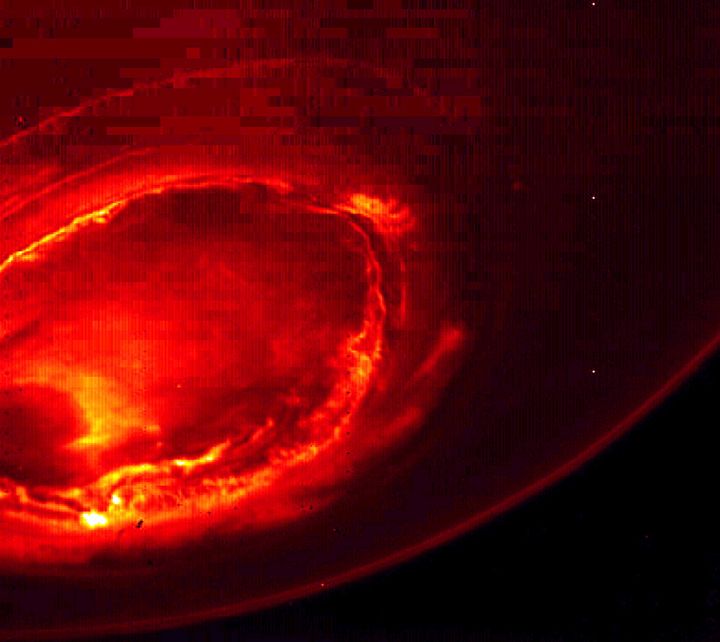Jupiter’s beautiful auroras (or northern lights) function in much the same way as the northern lights here on Earth, except when they don’t.
In a recent flyby from NASA’s Juno spacecraft researchers were given a tantalising glimpse into how Jupiter is able to produce the solar system’s most stunning light show and frankly no-one really knows.
What we know is that most of the time Jupiter’s auroras are caused by electrically charged particles striking Jupiter’s atmosphere at speed.
We also know that thanks to Jupiter’s gargantuan magnetic field it can accelerate particles towards the atmosphere at energies of up to 400,000 volts.
To put that into perspective that’s 10 to 30 times higher than the energies found here on Earth. Only several thousand volts are needed to generate the most stunning auroras here on Earth.
What’s really mysterious though is that while scientists detected these huge energy bursts during most of Jupiter’s intense auroras, it wasn’t all of them.

That means that something, some unknown force is actually generating these huge light shows.
“At Jupiter, the brightest auroras are caused by some kind of turbulent acceleration process that we do not understand very well,” explains Barry Mauk of the Johns Hopkins University Applied Physics Laboratory.
One theory the team have is that as the density of the auroral generation gets stronger and stronger the whole process becomes unstable and a new acceleration force takes over, the problem is we have literally no idea what that force is.

The good news is that we can only learn more about what’s going on.
As NASA points out, many scientists consider Jupiter a giant laboratory for us here on Earth because in some cases it just doesn’t follow the law of physics as we understand it here on Earth.
Jupiter’s magnetic field for example is a staggering 20,000 times stronger than the field found on Earth.
Its radiation belt is so powerful that it’s actually slowly destroying the Juno spacecraft as we speak.
